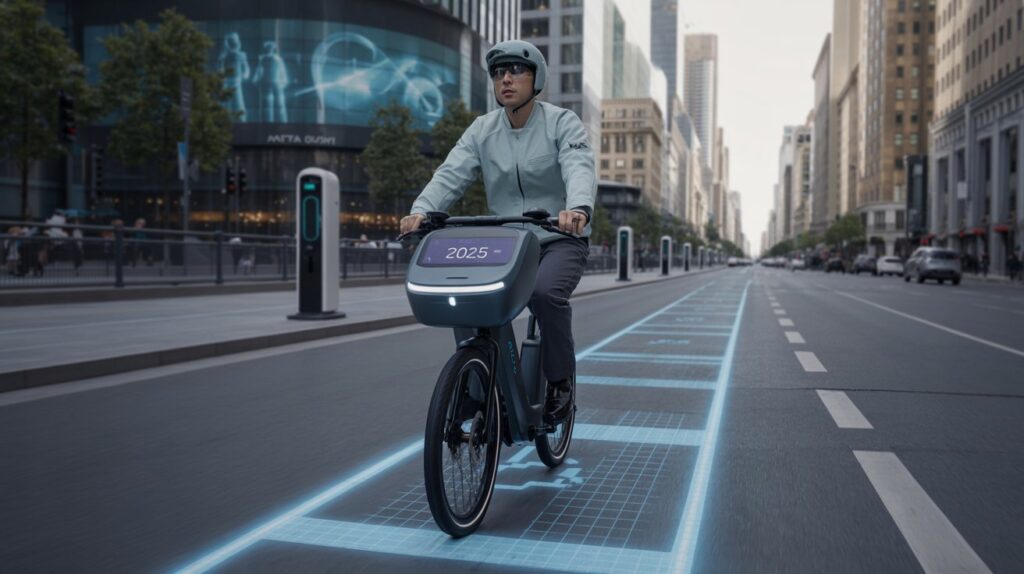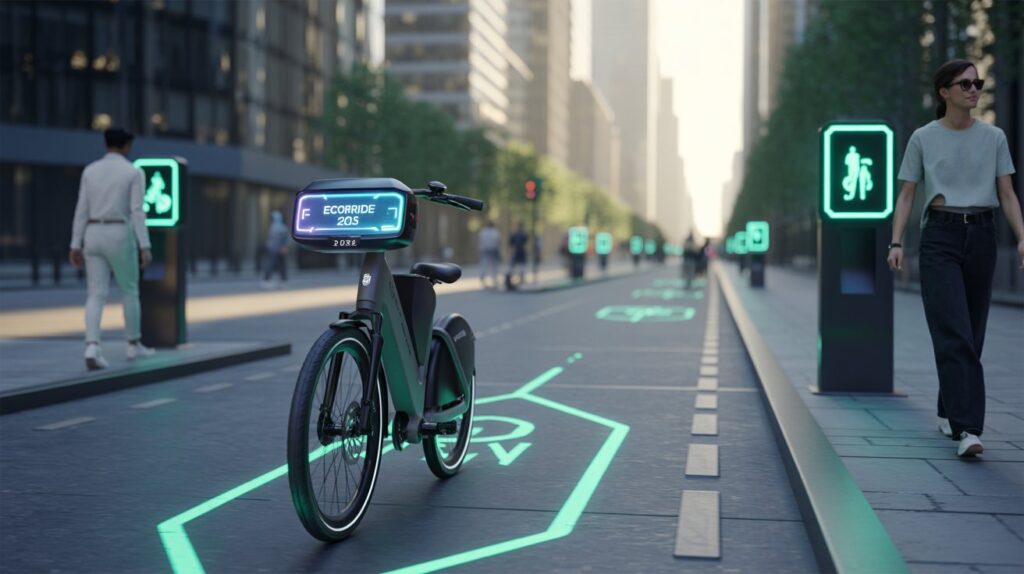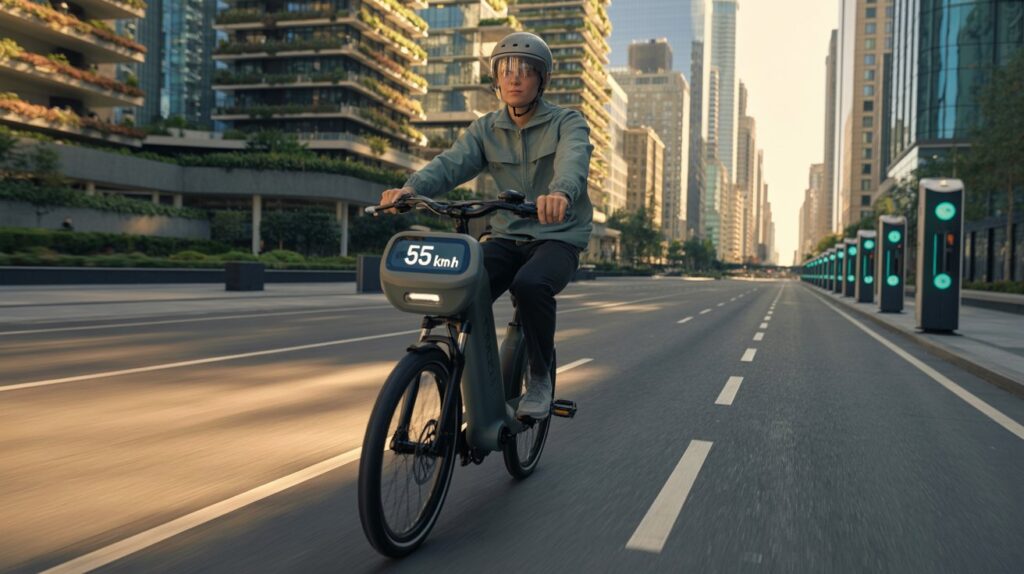Are electric bikes the future? Let’s unpack the full picture.
The answer isn’t a simple yes or no — it’s layered, practical, and grounded in real-world shifts happening right now in 2025. The question “Are electric bikes the future?” has silently turned into “Why isn’t everyone already riding one?”
If you’re still debating e-bikes vs fuel-powered scooters, motorcycles, or even cars — this article is for you. Not based on hype. Not based on emotion. Just straight-up, field-tested, globally tracked, and locally felt insight.
1. E-Bike Sales Didn’t Just Grow — They Exploded

By Q2 of 2025, the global e-bike market crossed $52 billion, overtaking fuel-based two-wheelers in sales volume in over 37 countries. That includes:
- The entire EU zone
- 9 U.S. states including California, Oregon, New York, and Colorado
- Major Asian markets like South Korea and Japan
Translation: In more places than not, people are choosing e-bikes over fuel bikes. Not for fun. For real-life transport.
Why? Because they’re:
- Faster in traffic
- Cheaper to run
- Easier to maintain
- Genuinely practical for city life
2. Total Cost of Ownership: Fuel Bikes Can’t Compete
Let’s break it down with real numbers.
| Expense | Fuel Scooter (3 yrs) | E-Bike (3 yrs) |
|---|---|---|
| Initial Price | $1,600 | $1,300 |
| Fuel/Charging | $890 (gas) | $120 (electricity) |
| Maintenance | $550 | $110 |
| Oil, filters | $240 | $0 |
| Registration | $180 | $40 |
| Total | $3,460 | $1,570 |
You save nearly $1,900 over three years. That’s not minor — that’s decision-changing.
And you know what’s wild? These numbers are conservative. In cities with subsidies or free charging, the gap widens even further.
3. Charging Time? Solved. Range Anxiety? Irrelevant.
This used to be the biggest complaint. “What if it runs out?”
But in 2025:
- The average mid-range e-bike now charges in 2.5 to 3 hours
- You can get 80–100 miles per charge
- Portable battery packs are now under 7 pounds and fit in a backpack
- Fast-charging stations for bikes are being installed at coffee shops, co-working spaces, malls
Some delivery riders in New York do 120 miles/day — all on e-bikes — swapping a second battery halfway through. That’s legit, high-performance use, not Sunday leisure rides.
4. Power and Speed: The Silent Killer of Gas Bikes

Forget the old image of underpowered electric motors.
Today’s high-end e-bikes can:
- Hit 28–35 mph easily (Class 3 models)
- Carry cargo up to 150 kg
- Handle 15-20% gradients like butter
- Switch between eco, sport, and turbo modes on demand
And the torque? Instant. Unlike fuel bikes that need revving, e-bikes deliver power as soon as you start pedaling.
If you haven’t ridden one lately, you have no idea what they’re capable of in 2025.
5. Urban Planning is Quietly Favouring E-Bikes
Here’s a detail nobody’s talking about:
City road systems are being re-coded to prioritize low-emission vehicles — and e-bikes are at the top of that list.
This includes:
- Bike-only lanes being expanded into core downtown zones
- Traffic signals that detect e-bikes and turn green faster
- Subsidized parking for e-bikes, often inside buildings
- Zones in cities like Barcelona, Portland, and Copenhagen where fuel bikes are now banned
Your fuel bike isn’t just getting more expensive — it’s becoming harder to ride legally.
6. The Corporate Shift is the Real Tipping Point
When delivery companies, security patrols, postal services, and even large IT parks start replacing fuel vehicles with e-bikes — that’s not a trend, that’s a transition.
- Amazon Logistics: 10,000+ e-bikes in U.S. cities
- Domino’s Pizza UK: 80% delivery fleet now electric
- Indian postal service: Shifting 30,000 delivery riders to e-bikes
- Pakistan courier startups: Using solar-powered e-bike hubs in Karachi and Lahore
These aren’t hobbyists. These are organizations with spreadsheets, not emotions — and they’re all choosing electric.
7. Cold? Rain? Hills? No Problem Anymore.
Objection #1: “Won’t work in rain or snow.”
Objection #2: “I live on a hill.”
2025’s e-bikes laugh in the face of both.
- Waterproofing is now standard (IPX6 minimum)
- Motor controllers auto-adapt to wet conditions
- Hill assist + torque sensors let you climb inclines like a pro
- Fat tire e-bikes and AWD models are killing it in Canada, Norway, and even Murree
There are even e-bike umbrellas and poncho kits in the market for monsoon riders.
8. Are electric bikes the future? They’ve Already Killed the Past.

This isn’t a future tense question anymore. It’s a current reality. We’re past the “if” and “when” stage.
Fuel bikes peaked in 2018.
Electric bikes hit exponential curve in 2021.
In 2025, they dominate the conversation — and the roads.
The only people still on gas-powered two-wheelers are:
- Rural area riders with zero electric access
- Niche performance motorcyclists
- People holding onto nostalgia
Everyone else is already in transition — or planning it.
9. Insurance, Theft, Repairs — Also in E-Bikes’ Favor
Fuel bike:
- Needs license, registration, insurance (in most regions)
- Easier to steal, harder to track
- Repairs involve mechanics, fluids, spark plugs
E-bike:
- Low-speed models often need no license
- Can be tracked via GPS apps (Theft recovery rate is 3x higher)
- Can be repaired at home in 10 mins — brakes, tires, chains
In fact, you can get plug-and-play spare kits for most common e-bikes on Amazon, Walmart, or local shops now
10. What You’ll Miss If You Ignore the Shift
Here’s what sticking to fuel bikes in 2025 will cost you:
- More fuel bills
- Harder resell value
- Restricted zones
- Noisy engine fines in some cities
- Getting left behind by innovation
But more than that — you’ll miss out on the sheer joy of riding a machine that’s quiet, fast, efficient, and built for the modern world.
Final Verdict
Are electric bikes the future?
No.
They are the present.
The future? That’s already being built — and it’s electric, silent, app-connected, and two-wheeled.
If you wait for “proof”, you’ll be buying leftovers while others ride ahead — quietly, efficiently, and smarter.
Frequently Asked Questions (FAQs)
1. Are electric bikes really better than fuel bikes?
Yes — especially for urban use. Electric bikes offer lower running costs, zero fuel expense, minimal maintenance, and better access to city infrastructure. They’re cleaner, quieter, and often faster in traffic due to bike lanes and flexible routing.
2. How long do electric bike batteries last?
Most modern e-bike batteries last 3 to 5 years, depending on usage and care. On average, a battery can handle 500–1,000 full charge cycles before significant capacity loss occurs. Many brands now offer affordable battery replacements.
3. Can electric bikes climb steep hills easily?
Absolutely. With mid-drive motors and torque sensors, today’s e-bikes handle inclines far better than many people expect. Riders in hilly areas like San Francisco and Murree use e-bikes daily with ease.
4. Are electric bikes waterproof or safe in the rain?
Yes — most e-bikes in 2025 come with IPX6 or higher waterproof ratings, meaning they can be safely ridden in heavy rain. However, you should still avoid submerging them or spraying high-pressure water directly on electrical components.
5. How far can I go on one charge?
Range varies by model, rider weight, terrain, and speed. That said, most e-bikes now offer 40–80 miles (65–130 km) on a single charge. Premium models with dual batteries can go beyond 100 miles.
6. Do I need a license or registration for an electric bike?
In most countries, Class 1 and Class 2 e-bikes (pedal-assist or low-speed throttle) do not require a license or registration. However, Class 3 or high-speed models may need registration in some regions. Always check local laws.
7. What is the maintenance like compared to fuel bikes?
E-bikes have:
- No oil changes
- No air filters
- No spark plugs
- Less brake wear (due to regenerative braking)
Routine maintenance includes chain lubrication, tire pressure checks, and occasional brake pad replacement — all easy and cheap.
8. Are electric bikes suitable for delivery work or daily commutes?
Yes — and thousands of couriers around the world use e-bikes for daily work. They’re reliable, fast in traffic, and cheaper to run than any fuel alternative. Many delivery riders now cover 100+ km daily using swappable battery systems.
9. Can I charge my e-bike from a regular wall socket?
Yes. Most e-bikes are designed to charge via standard home outlets (110V–240V). Charging a depleted battery usually takes 3–5 hours. Some newer models support fast charging in under 2 hours.
10. What are the risks of theft, and how can I protect my e-bike?
E-bike theft is rising — but so is protection tech. Use:
- Smart GPS locks
- Frame-integrated alarms
- App tracking
- Heavy-duty U-locks
Storing indoors or in monitored parking also helps. Some insurers now offer e-bike theft coverage.
11. Are there government subsidies for electric bikes?
Yes — many countries (including the U.S., Germany, Netherlands, India) offer purchase rebates, tax credits, or zero-interest loans for e-bike buyers. In the U.S., some cities offer $500–$1,500 off on qualifying e-bikes.
12. What kind of person should buy an electric bike in 2025?
- Urban commuters tired of fuel prices
- Delivery workers looking to cut costs
- College students and teens (no license needed)
- Seniors wanting light mobility
- Eco-conscious riders
- Anyone wanting fast, smart, clean travel
In short: almost everyone.
13. Where can I learn more about e-bikes and how to choose one?
You can explore helpful guides, comparisons, and in-depth e-bike info at:
- 🔗 https://ridethebikes.xyz/ – Your trusted resource for electric bike tips, reviews, and buyer guides
- 🔗 https://247webagency.com/ – For powerful web presence, digital strategy, and content like this one









